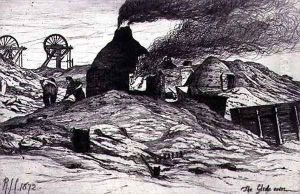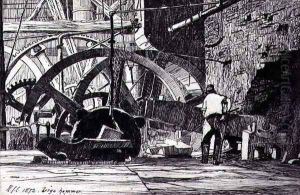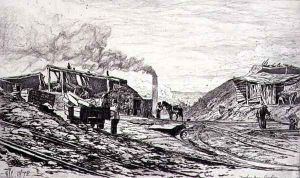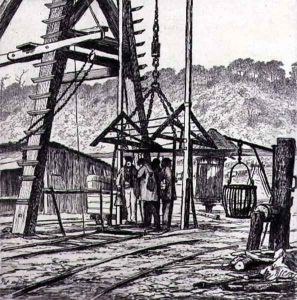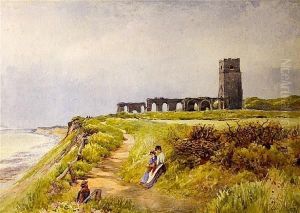Richard Samuel Chattock Paintings
Richard Samuel Chattock was an English artist born in 1825, primarily known for his work as an etcher. During his lifetime, he achieved modest recognition and contributed to the etching revival in Britain, which took place during the late 19th century. Chattock was also acknowledged for his landscape paintings, but it was his skill in etching that distinguished him among his peers.
Chattock was educated at Solihull Grammar School and later at St. John's College, Cambridge, where he developed an interest in the arts. His early career was not in the arts, however, as he initially pursued a profession in engineering. It wasn't until later in life that he shifted his focus to art, embracing etching as his primary medium.
In the Victorian era, etching was undergoing a resurgence as an art form, thanks in part to the efforts of artists like Francis Seymour Haden and James McNeill Whistler, who were leading figures in the etching revival. Chattock was heavily influenced by this movement and dedicated himself to mastering the technique. He became associated with the Society of Painter-Etchers, which was founded in 1880 and later became the Royal Society of Painter-Printmakers, an institution that aimed to promote etching as a legitimate form of fine art rather than just a printmaking process.
Throughout his career, Chattock produced a considerable body of work, comprising rural scenes, landscapes, and architectural views. His etchings often captured the British countryside, including regions such as Warwickshire, where he lived for a period, and the Thames valley. Chattock's attention to detail and ability to convey atmosphere and light in his etchings were particularly admired.
Despite his dedication to etching, Chattock never quite achieved the level of fame enjoyed by some of his contemporaries. His work was, however, appreciated by connoisseurs and collectors of etchings. After a long career, Richard Samuel Chattock passed away in 1906. Today, his etchings can be found in various collections, including those of the British Museum and the Victoria and Albert Museum, serving as a testament to his contribution to the art of etching.
